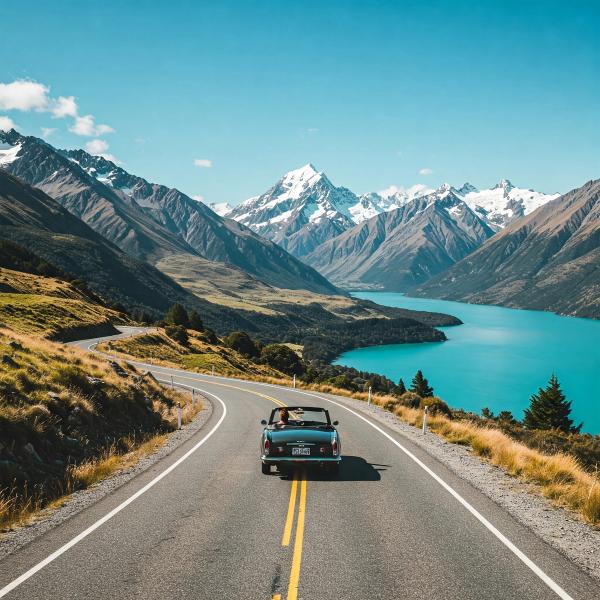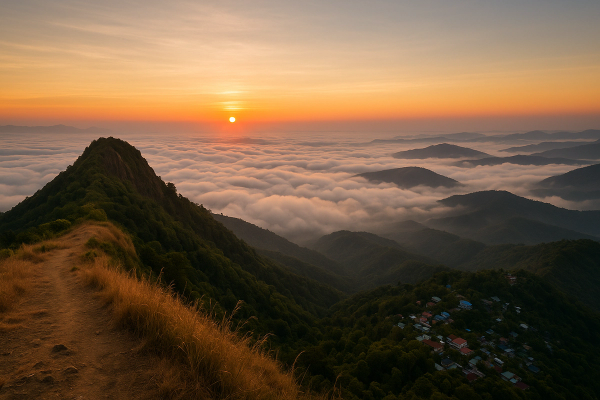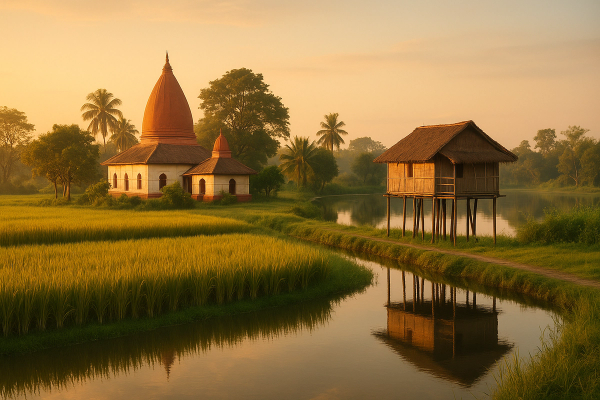Global Hiking & Adventure Hotspots: 2025 Edition — the messy, magical stuff I actually lived through#
So, 2025 has been… wild. My boots are still muddy in the trunk, my hip feels like it has a small rock living in it, and my camera roll is 80% mountains and badly framed selfies. I chased a bunch of hiking and adventure spots across the world, and honestly, some places blew my mind and some just blew my tent into the next valley. If you’re thinking about lacing up and going big this year, here’s what actually went down for me — the nice bits, the oh-no bits, and the “why did I think instant ramen on a ridgeline was a good idea?” bits.¶
2025 trends I noticed on the trail (aka stuff that’ll change your plans)#
Big picture: adventure travel is booming again, but it’s not like 2019. Lots more timed-entry systems and trail quotas popping up, more paid conservation fees, and guides being required where they weren’t before. Shoulder season is the new high season because everyone’s trying to dodge crowds and pay a little less. And tech everywhere: eSIMs, digital permits, QR codes for toilets — not kidding.¶
- Europe’s ETIAS pre-travel authorization is rolling out in 2025 for visa‑exempt travelers to Schengen countries. It’s not a visa, but you still gotta apply online before you fly. Check the official site because dates are staggered, and some folks still don’t need it yet.
- Mount Fuji tightened rules in 2024 and they’re still in effect: mandatory booking on the busy Yoshida Trail in season, daily caps, and a fee (around ¥2,000 conservation fee) — 2025 continues that system. Show up without a reservation and you’ll be turned around.
- Machu Picchu tickets now use fixed circuits and time slots. 2025 is the same deal: book weeks ahead, choose your route (like Circuit 1 or 4), and be ready for ID checks at the gate.
- Bali’s tourist levy (≈ 150,000 IDR) is still a thing in 2025 — pay online or on arrival. More national parks in Indonesia have online permit systems too, like Rinjani when it’s open.
Oh, and a bunch of parks in the US and Europe refined their timed entries this year — Arches, Rocky Mountain, Tre Cime parking in the Dolomites, Lago di Braies road access. It feels annoying when you’re in a rush, but actually it saved me from the worst of the crowds a few times.¶
Japan: Mount Fuji, then ducked into the Japanese Alps (Nagano side)#
I did Fuji the boringly responsible way — booked the Yoshida Trail slot ahead of time, paid the fee, and still got stuck behind a zigzag of headlamps at 3 a.m. The cap is there for a reason. Don’t fight it. My biggest tip: skip the summit sunrise crowd if you’re not 100% with altitudes. We slept at a station‑hut and went a bit later. Less Insta glory, more oxygen.¶
Lodging costs in the mountains jumped. Huts near Fuji and in the North Alps ran around ¥9,000–¥12,000 for half‑board in 2025. Tent spots more like ¥2,000–¥3,000 if permitted. Also the Japan Rail Pass isn’t the magic deal it used to be since prices went up in late 2023 — for 2025 I just bought point‑to‑point tickets and it was fine. Visa wise, many nationalities still get 90 days visa‑free in Japan, but don’t assume — check the MOFA site, because rules can change and sometimes reciprocity bites you when you weren’t looking.¶
- Bring real layers. Even in July/August winds get gnarly. Don’t be me and pack a thin hoodie like a clown.
- If you’re hiking outside Fuji, the Karasawa Cirque / Kamikochi area is still epic. Book huts online early, weekends fill fast.
Patagonia: Torres del Paine & El Chaltén, the wind tried to steal my hat (it won)#
I hit Torres del Paine first, and yeah, the caves of clouds and that turquoise ice water, it’s not hype. It’s real. 2025 park entry for foreigners hovers roughly around $35–$40 USD equivalent, but prices shift with season. The real budgeting pain is camping and refugios — beds with meals were $80–$150 per night, while campsites ran $25–$40. Book everything months ahead for the W or O circuits. They’ve gotten much stricter about reservations and camp quotas, which is better for the trails but bad for last‑minute me.¶
El Chaltén across the border felt looser — day hikes like Laguna de los Tres still free, and wow the views of Fitz Roy in good weather. I caught a storm that made the mountain hide like a shy cat, but the empanadas helped. Flights to Punta Arenas or El Calafate got pricier this year compared to 2022, so I used a multi‑city ticket and saved like 120 bucks. Do watch the wind warnings. I saw tents rolling like tumbleweeds. Not a metaphor.¶
- Safety: carry a paper map even if you love AllTrails. I had signal drop and rain killed my phone for an afternoon.
- Catamaran on Pehoé still runs, but slots fill. Buy tickets early in high season Dec–Feb.
Peru: Machu Picchu (tickets are weird now), Salkantay as my backup love#
Cusco felt busy again. In 2025, Machu Picchu tickets still use those strict circuit choices and time windows. I paid about $45–$50 for the site ticket and booked like six weeks ahead. The staff actually checked my passport at the gate, so don’t mess around. Trains Aguas Calientes to Ollantaytambo varied crazy — $60 on a basic slot, $150+ on fancy times. I booked an early bird return to save cash and it was fine.¶
Inca Trail permits are sold through operators only, same rule as before, and they book out months out. I ended up doing Salkantay, which you can do independently or with a guide. Four days, high passes, coffee farm lunch, lots of cow bells. 2025 tour prices felt like $200–$350 depending on gear quality. If you’re solo, grab a local porter/guide for day 2 to avoid the worst navigation. Accommodation in Cusco: $12–$30 for hostels, $45–$80 for boutique. Safety felt okay, but keep an eye on local strikes that can still pop up — I got stuck in Ollantaytambo for half a day, which honestly wasn’t the worst place to be stuck.¶
Nepal: Annapurna Circuit bits & Everest region drama (still no solo trekking in most places)#
Nepal still has the 2023 rule in place for 2025 — solo trekking in most national parks is banned, you need a registered guide, and you’ll need a TIMS card and regional permits. Annapurna permits, ACAP fees, etc. Plan a couple days in Kathmandu just for paperwork, it’s faster now but not instant. Lukla flights are as chaotic as folklore says. If the weather laughs at you, you’ll sit and sip milk tea and wait. I got lucky one way, not lucky the other.¶
- Costs: teahouses $5–$15 per night, meals $3–$8 per dish. Guide rates vary, but $25–$40 per day isn’t strange. Bring cash in smaller notes.
- Best windows: Oct–Nov or March–April for safer skies. Monsoon will wreck your views, don’t argue with clouds.
Morocco: Toubkal after the 2023 quake — trails open but respect the mountains#
Imlil was buzzing but humble. As of 2025, Toubkal National Park routes are open, though you’ll still see repair works and some landslide scars. A local guide isn’t just smart, it’s honestly the best way to make sure you don’t miss a sudden closure or new detour. I paid about $60 for a day guiding rate. Refuge Les Mouflons and the other mountain hut had beds around €20–€30, food extra. Safety felt good, but bring warm stuff even in summer — I froze at 4 a.m. Visa wise, US/EU visitors typically get 90 days visa‑free, but again… always check the current rule before you fly, don’t blame me if it changes overnight.¶
Kyrgyzstan: Ala-Archa and around Karakol — cheap, friendly, big skies#
If you want wide open valleys and horse bells and trails that feel raw, Kyrgyzstan is still this dreamy altitude wonder. Ala-Archa Gorge for a day hike near Bishkek, or Karakol to get into Ala-Kul, Altyn Arashan (hot springs saved my cranky knees). 2025 keeps visa‑free entry for many nationalities up to 60 days, including a lot of EU and US folks — check your passport’s status, but most hikers I met breezed in. Yurt stays $15–$30, guesthouses in Karakol $12–$40, food is simple and heavy in a way that feels earned after a ridge slog. Border areas with Tajikistan can have occasional closures, so don’t wander the frontier without checking recent advisories.¶
The Dolomites & Swiss Alps: rules, parking, and those sunrise crowds that don’t do nobody no good#
The Dolomites are still ridiculous. 2025 felt even busier, but management’s stricter. Tre Cime di Lavaredo road access has steep parking fees in season (around €30–€40 for cars) and caps. Lago di Braies limits private car access at peak hours — prebook shuttles or parking permits. I booked huts in South Tyrol online, which is basically mandatory now for July/August. Prices were around €60–€90 half‑board depending on hut. Via ferrata rentals were €20–€30, and guides for a day were €80–€150 depending on route difficulty.¶
Swiss side felt pricier (surprise!). I did a hut‑to‑hut wander near Grindelwald and my bank account did not thank me. ETIAS in 2025 means if you’re visa‑exempt you might need the authorization for Schengen; Switzerland is in Schengen, so plan your paperwork before you show up at the border with trekking poles like you live there.¶
New Zealand: Great Walks, sandflies, and the kindest park rangers on earth#
I got one Great Walk slot (kept missing the opening windows, I know, rookie), and did extra day hikes around Wanaka and Fiordland. DOC bookings for 2025 opened in spring and sold out fast for popular tracks like Milford and Routeburn. Huts generally cost $30–$100 per night, campsites $20–$40. NZ ETA is still required for many visa‑waiver visitors, so apply online before you book flights. My favorite day trek was Roy’s Peak at sunrise — busy, yes, but the view did the thing.¶
Pro tip: sandflies do not play. I got peppered by them near the coast. Bring the strong stuff. Also drive times are longer than they look on maps and car rentals in 2025 were $45–$85/day depending on season — book early, don’t bank on walk‑up availability.¶
Iceland: Reykjanes keeps rumbling, hikes are still magic if you respect closures#
I swung by the Reykjanes Peninsula again in 2025 and yeah, the volcano has moods. Some hiking areas open/close depending on the latest eruption or gas levels. Blue Lagoon operated on and off in 2024 and kept a cautious vibe into 2025. The Fagradalsfjall area is guided more often now, and tour prices I saw were around $80–$150. Don’t ignore safety tape or gas warnings — people do and it goes badly. Rental cars were pricey, $70–$120/day, but you can split costs with trail buddies you “accidentally” meet.¶
North America: Utah redrock and Canadian Rockies — timed entries, shuttle routines#
I did Arches with the timed entry in 2025 — it actually worked. Less chaos. Zion’s Angels Landing permits are still via lottery — I scored a late afternoon slot and it was perfect light. The desert heat was not perfect. Bring too much water, then bring more. Rockies side, Banff is tight on parking anywhere iconic. Moraine Lake road still closed to private vehicles, so shuttle or tour only. Park passes in Canada are required (around $11/day adult). Wildfire smoke weeks happen in late summer sometimes — I carried an N95 and felt like a prepared weirdo, and then it totally paid off one morning in Canmore when smoke rolled in.¶
Quick 2025 logistics you really shouldn’t skip#
- ETIAS: if you’re visa‑exempt for Schengen, 2025 is the year you likely need the online authorization. Check official ETIAS site for your nationality’s start date.
- UK’s ETA system expanded over 2024 and into 2025 for more nationalities. If you’re hopping via London before heading to the Highlands or the Lake District, confirm if you need ETA.
- Bali levy: pay the 150k IDR tourist tax — enforcement tightened in 2025 and they do spot checks.
- Fuji bookings and caps continue. Don’t arrive without proof or you’re hiking back to your bus.
- Machu Picchu circuits and timed entry: pick your route at booking, bring your passport, expect checks.
- US parks: timed entries at Arches and Rocky Mountain in 2025; Angels Landing is lottery; Glacier and Yosemite use seasonal systems too. Check NPS pages before you drive 7 hours to a gate guard’s shrug.
Where I stayed and what I actually paid (roughly, don’t @ me)#
Patagonia refugios $80–$150 half‑board. Torres campsites $25–$40. El Chaltén hostels $12–$25. Japan mountain huts ¥9,000–¥12,000, tent spots ¥2,000–¥3,000. Peru hostels $12–$30, Aguas Calientes more like $35–$80. Nepal teahouses $5–$15 nights, meals $3–$8 each, guide $25–$40/day. Morocco Imlil guesthouses $25–$60, refuge beds €20–€30, guide around $50–$80/day. Kyrgyzstan guesthouses $12–$40, yurt $15–$30. Dolomites huts €60–€90 half‑board. New Zealand huts $30–$100, camps $20–$40. Iceland rentals $70–$120/day, which hurt my wallet but helped my soul.¶
Things I messed up (so you don’t) and things that weirdly worked#
I didn’t book my Dolomites hut early enough, ended up sleeping in a valley B&B and hiking in at sunrise half‑asleep — still beautiful, but longer than smart. I forgot extra stove fuel in Patagonia and paid triple for a tiny can at the park store. I skipped Angels Landing once because of wind warnings and watched someone go anyway and get shaken up on the chains. Don’t do that. The stuff that worked: I carried a backup charging brick with a built‑in cable and taped my paper permit copies in a zip bag. I used eSIMs with offline maps everywhere, but kept a paper topo for days where my phone turned into a cold brick. Also, I started traveling in shoulder season more — saved money, saved my sanity. Crowds aren’t fun anymore, no one’s pretending.¶
Would I go back? Yes. Absolutely. But differently.#
I’d book earlier, travel lighter, and stop pretending I don’t need trekking poles — I do. I’d get more local guides instead of just winging it, because 2025 rules really reward knowing the system. I’d keep choosing places that manage crowds well, even if it means an extra step with permits. The payoff is real — quieter trails, fewer elbows. And I’d keep the spontaneity for food and side detours, not for park entries that will absolutely lock me out.¶
If you want my messy notes or need a nudge on picking routes, I’ve been jotting extra stuff over at AllBlogs.in — poke around there, it’s got a pile of real stories and planning guides that helped me not totally screw up this year.¶














